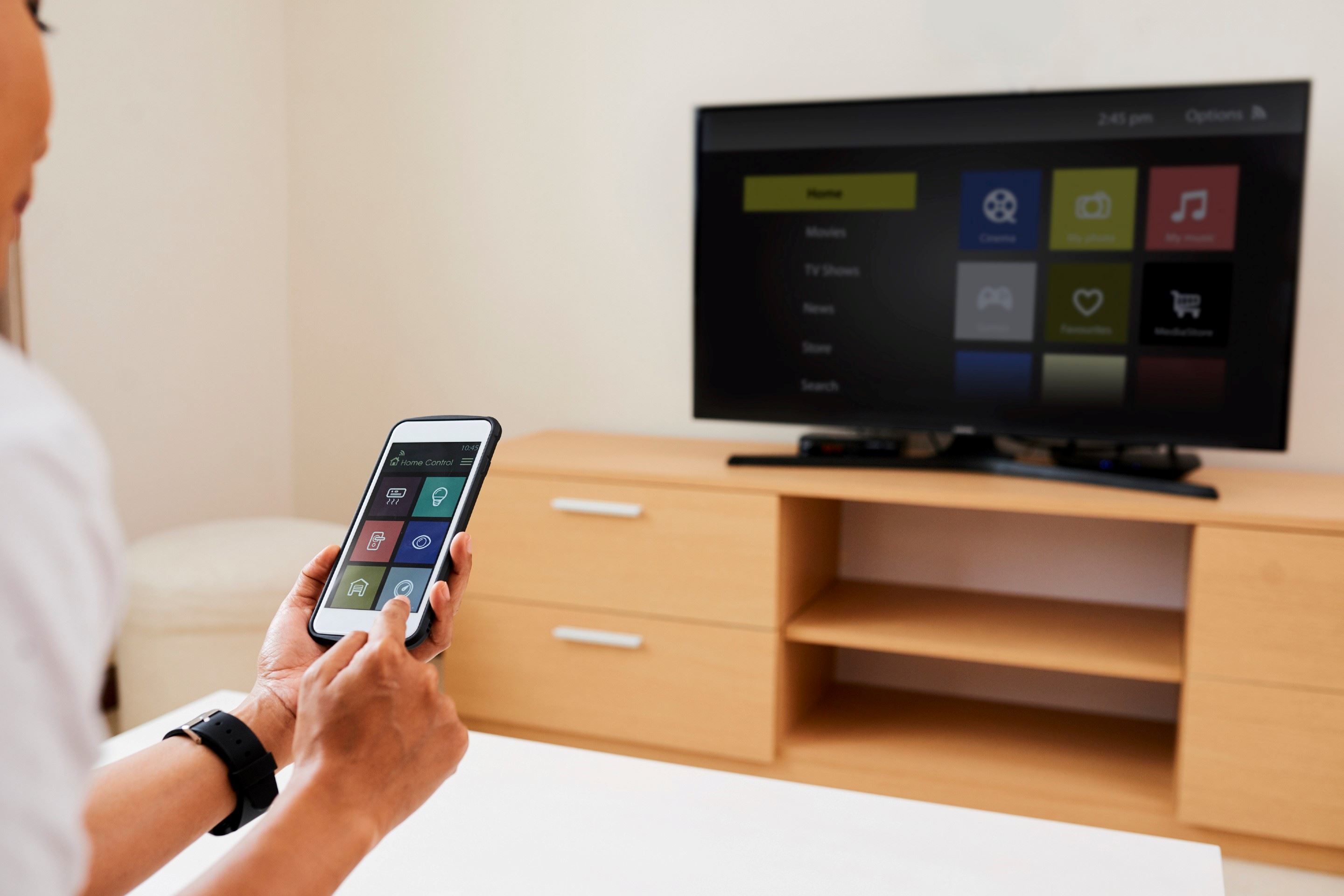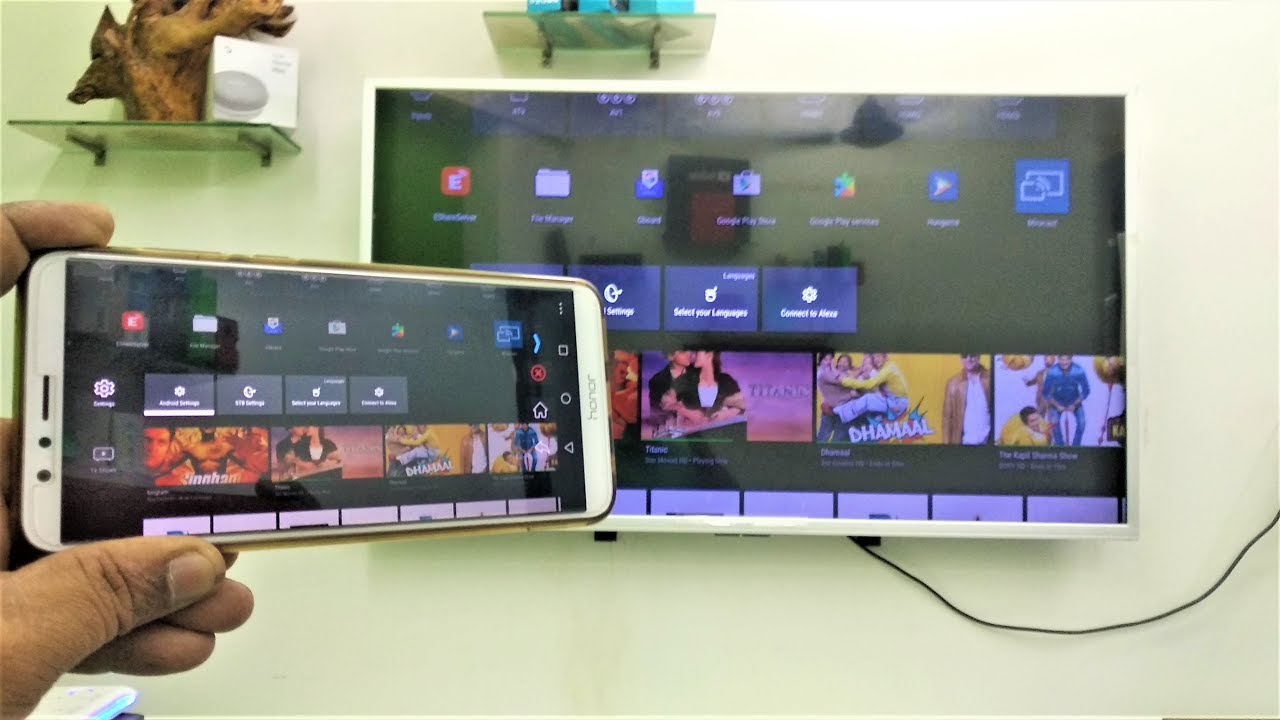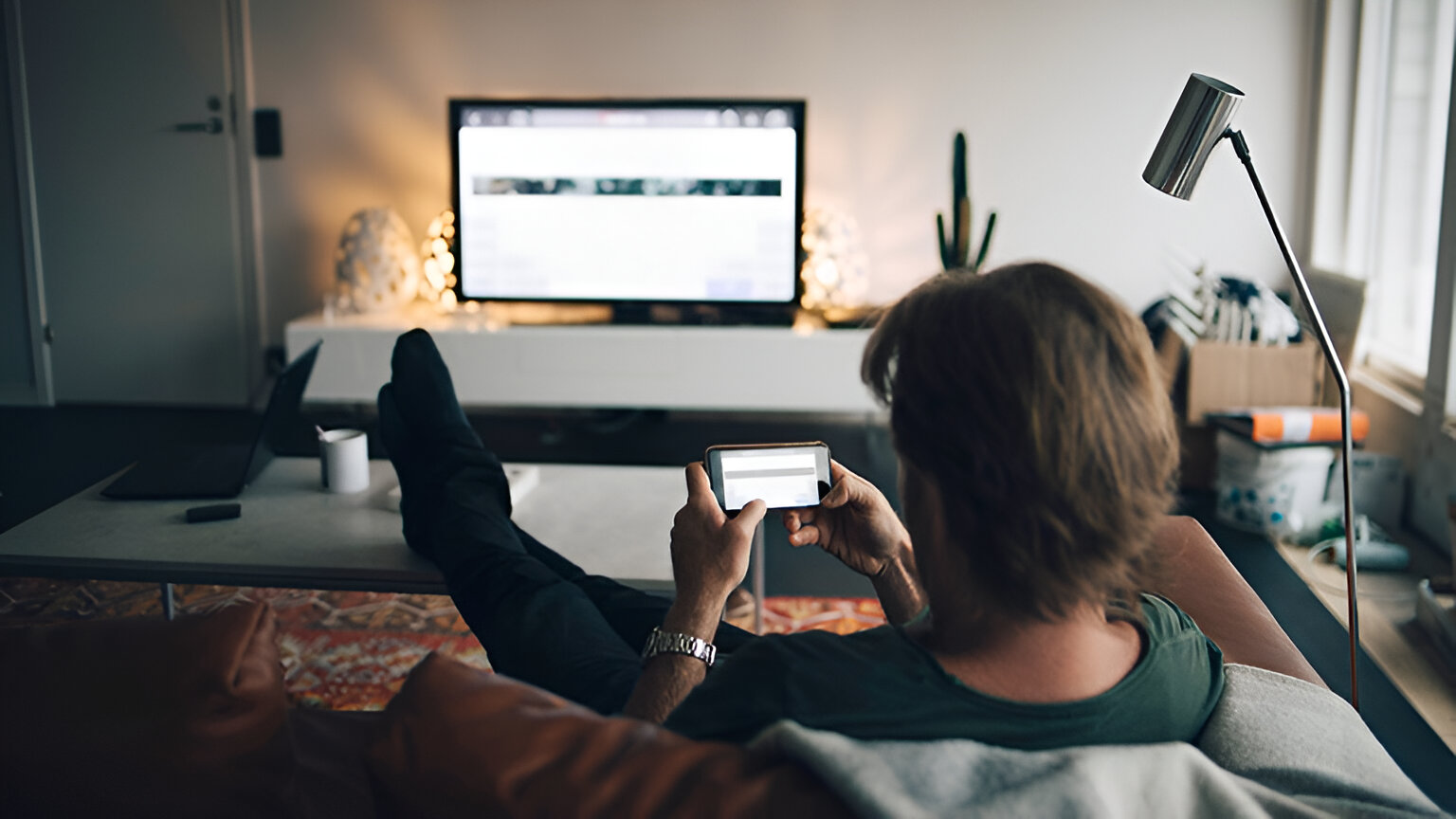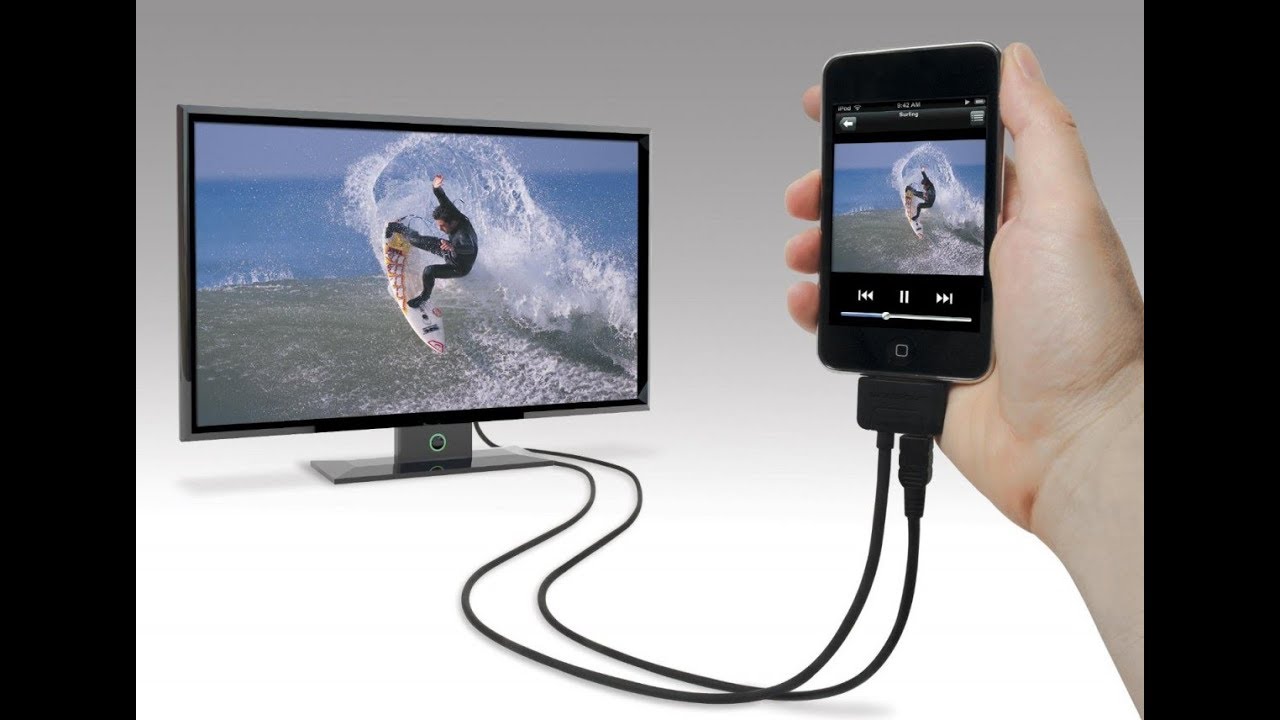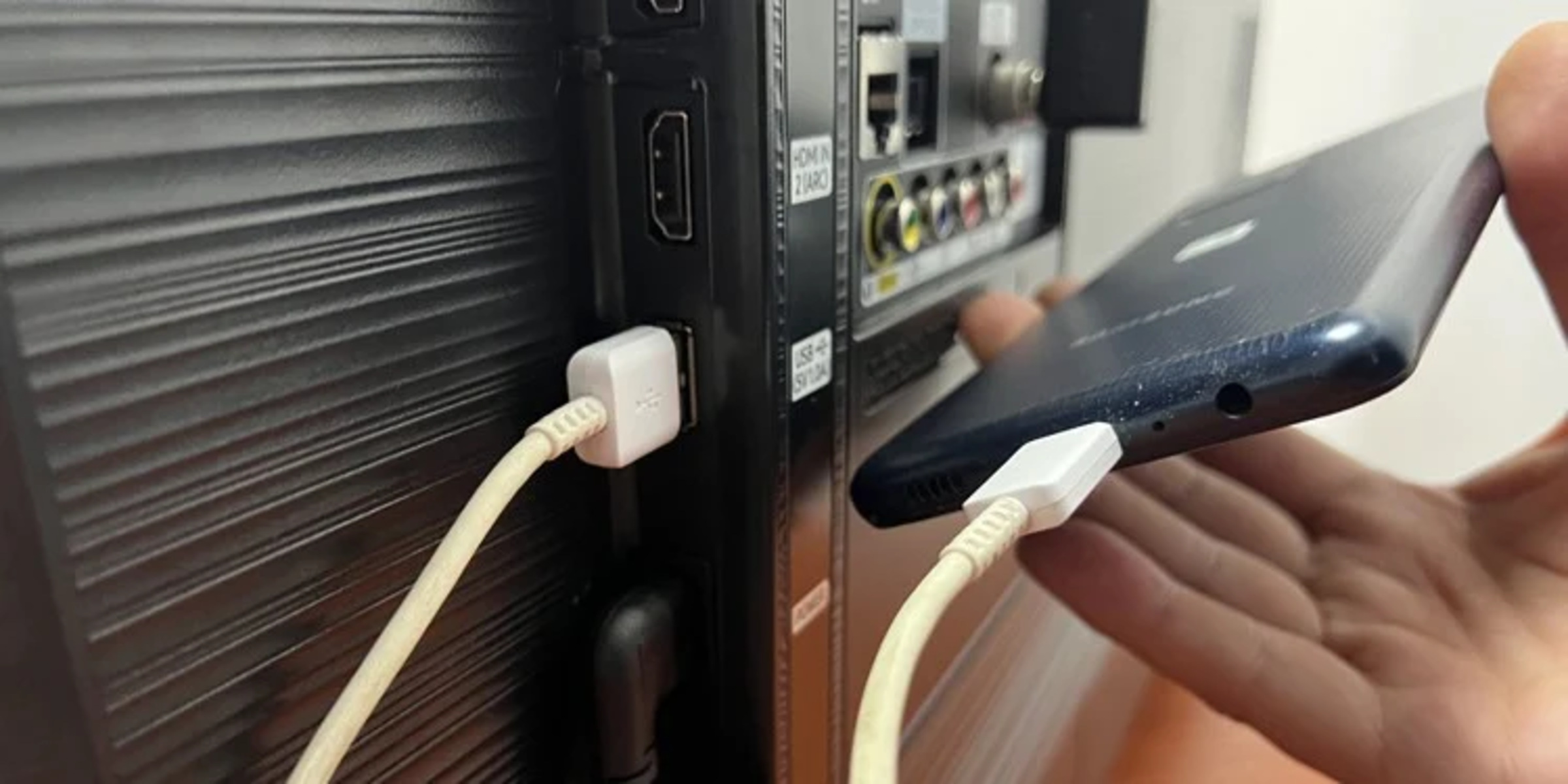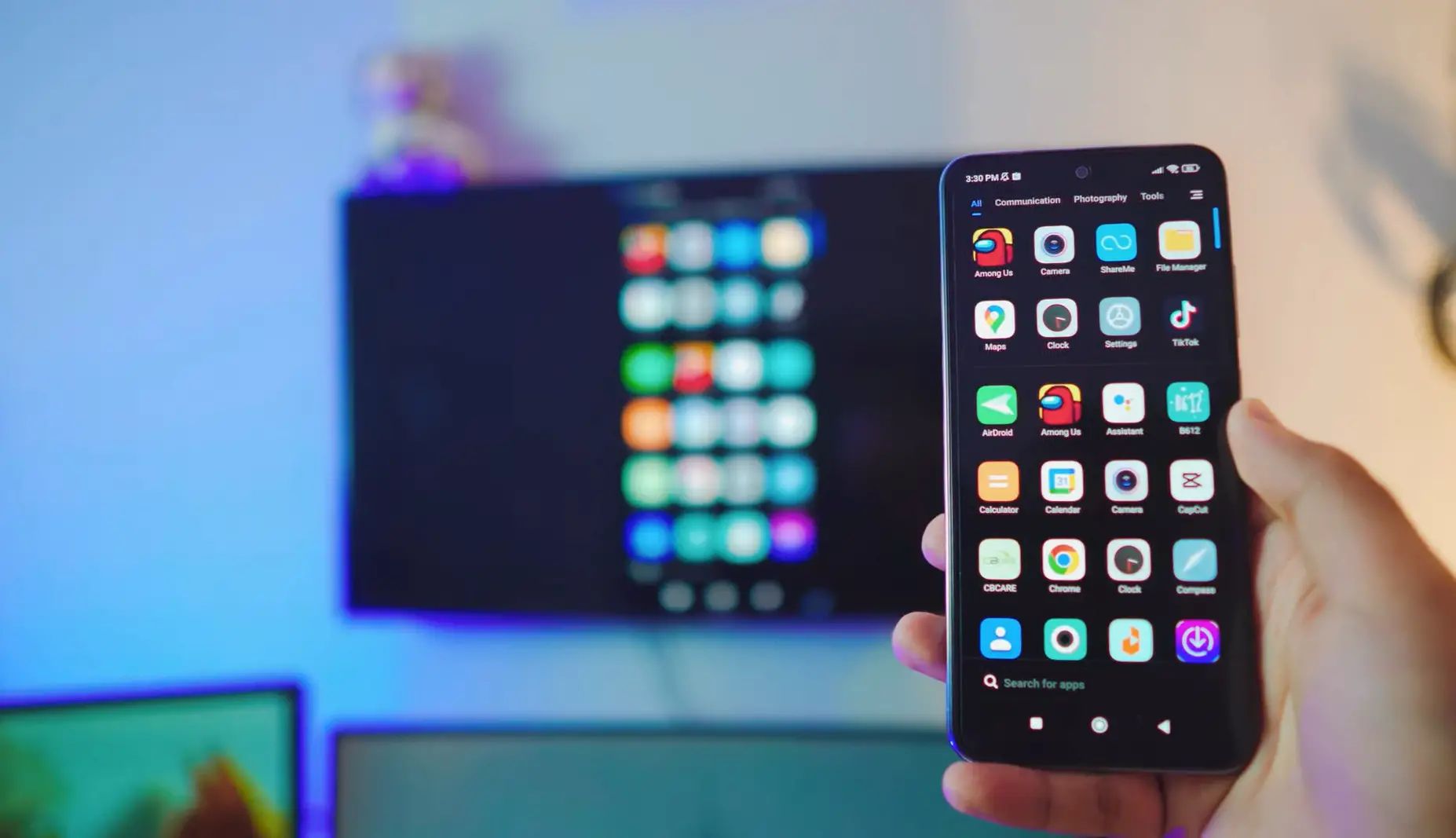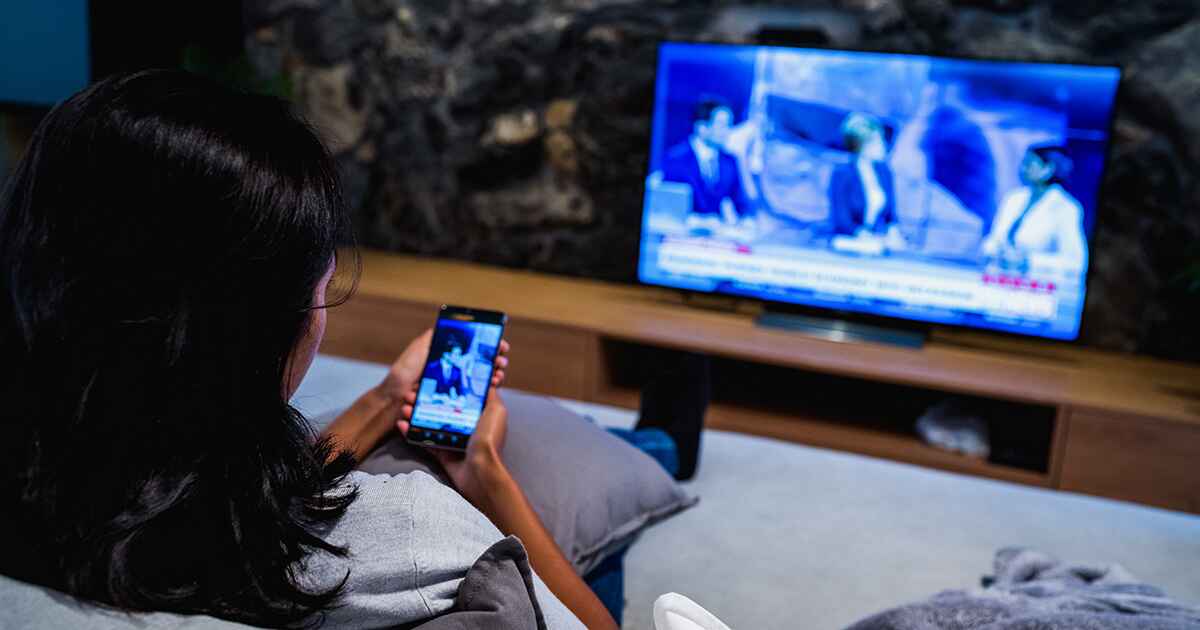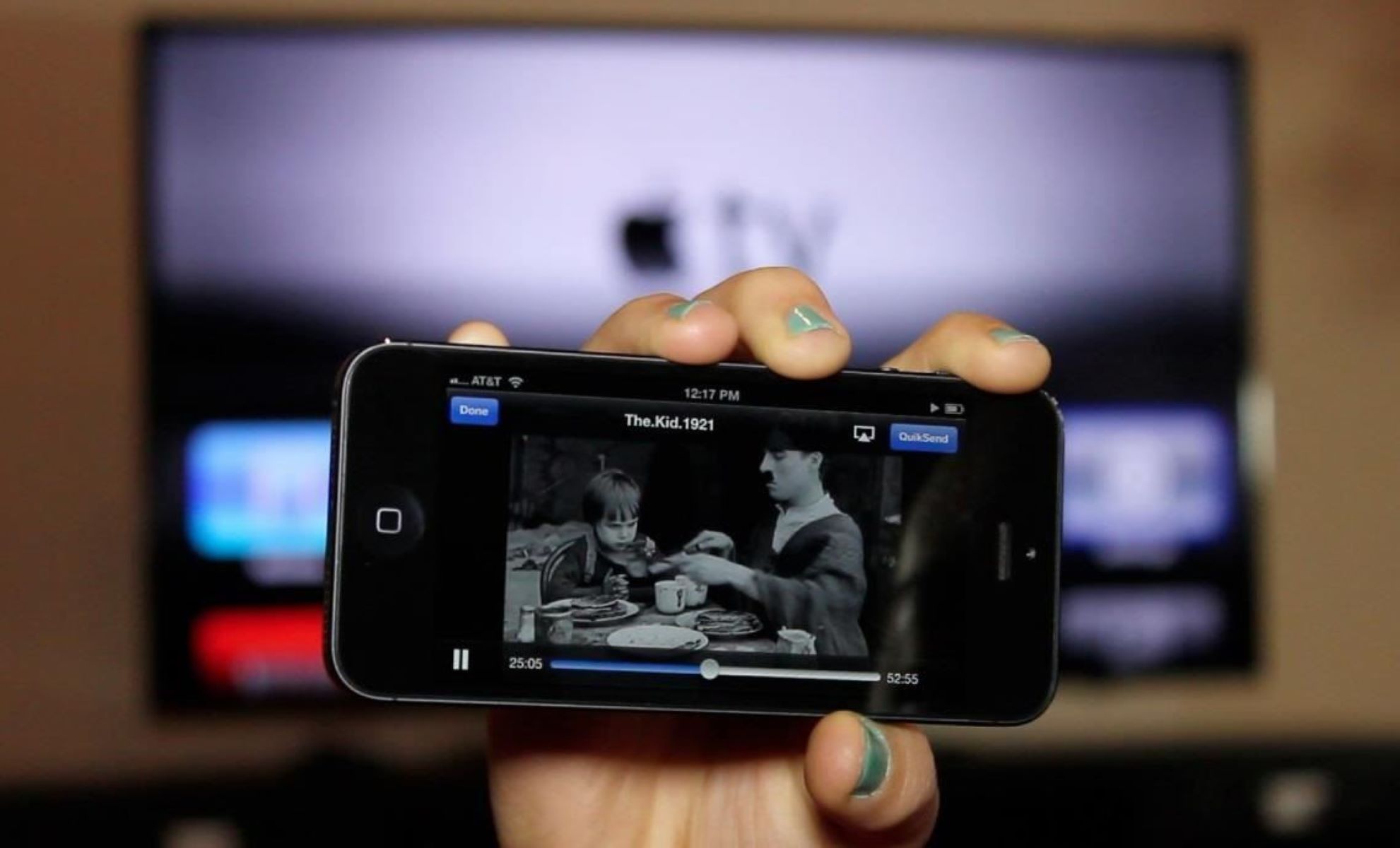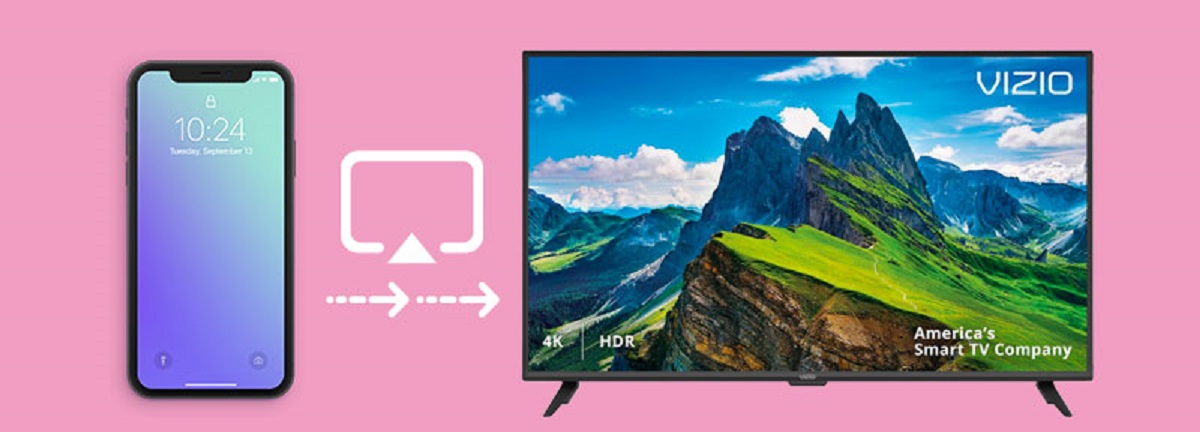Choosing the Right Wireless Connection Option
Connecting your phone to your TV wirelessly is a convenient way to enjoy your favorite content on a bigger screen. With the plethora of wireless connection options available, it’s essential to choose the right one that meets your specific needs. Here are some popular wireless connection methods to consider:
1. HDMI Adapter: One option is to use an HDMI adapter that connects to your phone’s charging port and allows you to mirror your phone’s screen onto the TV. This method offers high-quality and reliable streaming, but it requires a physical connection between your phone and the adapter.
2. Chromecast: Google Chromecast is another excellent choice for wireless connectivity. Simply plug the Chromecast device into your TV’s HDMI port and use the Google Home app to cast content from your phone to the TV. This option provides seamless streaming without the need for cables.
3. Apple TV: If you’re an Apple user, Apple TV is a fantastic option to connect your iPhone to your TV wirelessly. With AirPlay, you can effortlessly mirror your phone’s screen or stream content directly from apps that support AirPlay. Apple TV also offers additional features like access to streaming services and apps.
4. Smart TV Streaming: Many modern smart TVs have built-in wireless connectivity, allowing you to connect your phone directly to the TV without the need for additional devices. This method offers simplicity and convenience, as you can stream content directly from your phone to the TV using apps like YouTube or Netflix.
5. Miracast: Miracast is a wireless streaming standard supported by several Android devices. It enables you to mirror your phone’s screen onto the TV without the need for cables. To use Miracast, ensure that your TV is Miracast compatible and enable the feature on your phone’s settings.
6. Wireless Streaming Device: If none of the above options are suitable for your needs, you can consider using a wireless streaming device like Roku or Amazon Fire TV. These devices connect to your TV via HDMI and offer a wide range of streaming options, including mirroring your phone’s screen.
When choosing the right wireless connection option, consider factors such as compatibility with your devices, ease of setup, streaming quality, and additional features. Experiment with different methods to find the one that works best for you and enhances your viewing experience.
Lastly, it’s worth mentioning that each method may have specific requirements and limitations, so it’s essential to consult the user manuals or online resources for detailed instructions on setting up and troubleshooting any issues that may arise.
Using an HDMI Adapter for Wireless Connection
If you prefer a reliable and high-quality wireless connection between your phone and TV, using an HDMI adapter is an excellent option. This method allows you to mirror your phone’s screen onto the TV, providing you with a seamless viewing experience. Here’s how you can set up and use an HDMI adapter for wireless connectivity:
1. Check your phone’s compatibility: Before purchasing an HDMI adapter, ensure that your phone supports video output through its charging port. Most modern smartphones have this capability, but it’s always best to double-check your device’s specifications.
2. Purchase the right HDMI adapter: HDMI adapters come in various forms, such as USB-C to HDMI or Lightning to HDMI, depending on your phone’s charging port. Make sure to buy the correct adapter that matches your phone’s port.
3. Connect the HDMI adapter to your phone: Plug one end of the HDMI adapter into your phone’s charging port. Some adapters may also require an additional power source, like a USB connection, for optimal performance. Follow the manufacturer’s instructions for the specific adapter you are using.
4. Connect the HDMI adapter to your TV: Connect the other end of the HDMI adapter to an available HDMI port on your TV. Note the HDMI port number you connected the adapter to, as you’ll need to switch your TV’s input source to that specific HDMI port later.
5. Switch your TV’s input source: Use your TV remote or the buttons on your TV to change the input source to the HDMI port where you connected the adapter. This allows the TV to receive the signal from your phone.
6. Set up screen mirroring: Once the HDMI adapter is connected and the TV is set to the correct input source, you should see your phone’s screen mirrored on the TV. Depending on your phone’s software, you may need to enable screen mirroring in the settings menu. Look for options like “Smart View,” “Screen Mirroring,” or “Cast” and follow the prompts to connect to your TV.
7. Enjoy wireless content streaming: With the HDMI adapter successfully connected and screen mirroring enabled, you can now enjoy streaming videos, photos, and other content directly from your phone to the TV. Open your favorite streaming apps, play videos, or browse through photos, and they will be displayed on the big screen in real-time.
Using an HDMI adapter for wireless connectivity offers a reliable and high-quality streaming experience. However, keep in mind that this method requires a physical connection between your phone and the adapter, limiting your mobility to a certain extent. Additionally, ensure that you have sufficient battery power on your phone or a charging source nearby to prevent interruptions during streaming.
Connecting Your Phone to Your TV via Chromecast
If you’re looking for a seamless and wireless way to connect your phone to your TV, Google Chromecast is an excellent option. Chromecast allows you to stream content from your phone to your TV, providing a convenient and enjoyable viewing experience. Here’s how you can connect your phone to your TV via Chromecast:
1. Set up Chromecast: First, you need to set up your Chromecast device. Plug the Chromecast device into an available HDMI port on your TV. Then, connect the Chromecast to a power source using the provided USB cable and power adapter. Make sure both your TV and Chromecast are connected to the same Wi-Fi network.
2. Install the Google Home app: On your phone, download and install the Google Home app from the Apple App Store or Google Play Store. This app will serve as your control center for connecting and managing your Chromecast.
3. Connect your phone to Chromecast: Open the Google Home app and follow the setup instructions to connect your phone to your Chromecast device. Ensure that your phone is also connected to the same Wi-Fi network as your Chromecast device.
4. Choose content to cast: Once your phone is connected to Chromecast, you can choose the content you want to cast to your TV. Open your favorite streaming apps like Netflix, YouTube, or Spotify. Look for the Cast icon (a rectangle with Wi-Fi waves) within the app and tap it to select your Chromecast device. The content will then start playing on your TV.
5. Control playback from your phone: While streaming content to your TV, you can use your phone as a remote control. The Google Home app provides playback controls, allowing you to pause, play, adjust the volume, or even switch to a different video or song without interrupting the stream on your TV.
6. Enjoy casting multiple types of content: Chromecast supports a wide range of content types, including videos, music, photos, and even web pages. You can cast not only from streaming apps but also from websites with Chromecast support, allowing you to share online content directly on your TV.
Connecting your phone to your TV via Chromecast offers a wireless and hassle-free streaming experience. It eliminates the need for cables and allows you to take full control of your entertainment from the palm of your hand. Whether you’re watching movies, playing games, or sharing memorable moments with friends and family, Chromecast provides a versatile solution for enjoying content on the big screen.
Wireless Connection Using Apple TV
If you’re an Apple user, one of the best ways to connect your phone to your TV wirelessly is through Apple TV. Apple TV offers a seamless way to stream content from your iPhone to your TV, providing a rich and immersive viewing experience. Here’s how you can establish a wireless connection using Apple TV:
1. Set up Apple TV: Begin by setting up your Apple TV device. Connect the Apple TV to your TV using an HDMI cable and ensure that it’s powered on. Follow the on-screen instructions to complete the initial setup process, including connecting to your Wi-Fi network and signing in with your Apple ID.
2. Enable AirPlay on your iPhone: On your iPhone, swipe up from the bottom of the screen to open the Control Center. Tap the Screen Mirroring icon (represented by a rectangle with an arrow) and select your Apple TV device from the list of available devices. Your iPhone will establish a connection to your Apple TV.
3. Mirror your iPhone’s screen: Once connected, your iPhone’s screen should appear on your TV. You can now navigate your iPhone’s interface directly from your TV, allowing you to access apps, play games, or stream content as if you were using your iPhone itself.
4. Stream content from apps supporting AirPlay: Many apps on your iPhone support AirPlay, which means you can seamlessly stream content directly to your TV using Apple TV. Open an app like YouTube, Netflix, or Photos, select the content you want to stream, and tap the AirPlay icon. Choose your Apple TV from the list of available devices, and the content will start playing on your TV.
5. Enjoy additional features and services: In addition to screen mirroring and content streaming, Apple TV offers a variety of features and services. These include access to popular streaming platforms, such as Apple TV+, Netflix, Hulu, and more. You can also download apps, play games, and even use your Apple TV as a hub for HomeKit-enabled smart devices.
6. Use remote control options: Apple TV provides a user-friendly remote control with intuitive navigation. You can use it to control playback, adjust volume, browse through menus, and perform other actions directly from the comfort of your couch. Additionally, you can also use your iPhone as a remote control by downloading the Apple TV Remote app.
Wirelessly connecting your iPhone to your TV using Apple TV offers a seamless and versatile streaming experience. With AirPlay and the multitude of apps and services available, you can easily enjoy your favorite content on the big screen while harnessing the powerful functionality of your iPhone. Whether you’re watching movies, playing games, or sharing memories with loved ones, Apple TV elevates your entertainment experience to a whole new level.
Streaming Through a Smart TV
If you own a smart TV, you can take advantage of its built-in wireless connectivity to directly stream content from your phone. Smart TVs come equipped with pre-installed apps and the ability to download additional apps, providing a seamless and convenient way to access a wide range of streaming services. Here’s how you can stream content through a smart TV:
1. Check for smart TV compatibility: Ensure that your smart TV has the necessary functionality to connect wirelessly to your phone. Most modern smart TVs, regardless of brand, come with wireless connectivity options.
2. Connect your smart TV to Wi-Fi: To enable wireless streaming, connect your smart TV to your home Wi-Fi network. Go to the settings menu on your smart TV, select the Network or Wi-Fi option, and follow the prompts to connect to your Wi-Fi network.
3. Download streaming apps: On your smart TV, navigate to the app store or content store. Search for streaming apps such as Netflix, Hulu, Amazon Prime Video, or Disney+. Once you find the app you want, download and install it on your smart TV.
4. Launch the streaming app: Open the streaming app on your smart TV and sign in with your account credentials or create a new account if you don’t have one. Follow the on-screen instructions to set up and customize your preferences within the app.
5. Access the app on your phone: On your phone, open the streaming app and sign in with the same account used on your smart TV. This step allows you to sync your preferences and viewing history across both devices.
6. Stream content from your phone: Search for the content you want to watch on your phone and select the streaming option. Look for the Cast icon (typically represented by a rectangle with Wi-Fi waves) within the app and tap it. Choose your smart TV from the list of available devices, and the content will start playing on your TV.
7. Control playback from your phone: While streaming to your smart TV, you can use your phone as a remote control. This allows you to pause, play, adjust the volume, and navigate through the content effortlessly without having to use the TV remote.
Streaming through a smart TV eliminates the need for external devices or complicated setups. It provides a user-friendly interface, direct access to popular streaming services, and the convenience of managing your content from one device. Whether you’re binge-watching your favorite TV series or enjoying the latest blockbuster movie, streaming through a smart TV offers an immersive and enjoyable entertainment experience.
Mirroring Your Phone’s Screen with Miracast
If you own an Android device, you can utilize the Miracast technology to mirror your phone’s screen onto your TV wirelessly. Miracast allows you to display your phone’s screen, including apps, videos, photos, and games, on a larger TV screen without the need for any external cables. Here’s how you can mirror your phone’s screen with Miracast:
1. Check for Miracast compatibility: Ensure that your TV supports Miracast technology. Many modern smart TVs come with built-in Miracast support. Some Android devices also have a “Cast” or “Screen Mirroring” option in the settings menu, indicating Miracast capability.
2. Enable Miracast on your TV: On your TV, navigate to the settings menu and look for the option related to Screen Mirroring or Miracast. Enable or activate this feature to make your TV discoverable for Miracast connections from your phone.
3. Enable screen mirroring on your phone: On your Android device, open the settings menu and look for options like “Screen Mirroring,” “Cast,” or “Wireless Display.” Tap on this option and select your TV from the list of available devices. Your phone will establish a wireless connection to your TV.
4. Confirm the connection: Once connected, your phone’s screen should appear on your TV. You may be prompted to allow access or confirm the connection on your phone. Follow any on-screen instructions to complete the connection setup.
5. Adjust display settings (if necessary): Depending on your phone and TV, you may need to adjust the display settings to optimize the screen mirroring experience. This includes options like screen resolution, aspect ratio, and picture quality. Consult your phone’s settings and TV’s user manual for specific instructions.
6. Use your phone as a remote control: When screen mirroring, your phone essentially becomes a remote control for your TV. You can use your phone to navigate through apps, play videos, control playback, adjust volume, and perform other actions directly from your phone’s screen.
7. End screen mirroring: To stop screen mirroring, simply disable the Miracast or screen mirroring option on your phone or turn off the screen mirroring function on your TV. Alternatively, you can also disconnect the devices by tapping the “Disconnect” option or turning off the TV.
Screen mirroring with Miracast provides a versatile way to share your phone’s content on a larger screen. Whether you’re showcasing presentations, playing games, or watching videos, Miracast offers a convenient and wireless solution for enjoying your phone’s content on your TV. Remember to keep both your phone and TV up to date with the latest software updates to ensure compatibility and a smooth mirroring experience.
Using a Wireless Streaming Device
If you are looking for a versatile and user-friendly option to connect your phone to your TV wirelessly, using a wireless streaming device is an excellent choice. These devices provide a seamless and convenient way to stream content from your phone to your TV, giving you access to a wide range of apps and services. Here’s how you can use a wireless streaming device:
1. Choose a wireless streaming device: There are several popular wireless streaming devices available on the market, such as Roku, Amazon Fire TV Stick, or Google Chromecast. Research the features and compatibility of each device to determine the best fit for your needs.
2. Connect the streaming device to your TV: Plug the wireless streaming device into an available HDMI port on your TV. Ensure that the device is powered by connecting it to a power source, either through a USB port on your TV or a wall outlet, using the provided power adapter.
3. Set up the streaming device: Follow the on-screen instructions to complete the initial setup of the streaming device. This typically involves connecting the device to your Wi-Fi network and signing in with your account credentials. Each device may have specific instructions, so refer to the user manual or online resources for guidance.
4. Install streaming apps: Once the device is set up, browse the app store or content store of the streaming device to download and install apps. These may include popular streaming services like Netflix, Hulu, or Disney+, as well as other apps for music, games, news, and more.
5. Launch the streaming app on your phone: On your phone, open the streaming app that you want to use. Sign in to the app with your account credentials. Ensure that your phone and streaming device are connected to the same Wi-Fi network.
6. Select the streaming device: Look for the Cast or AirPlay icon within the streaming app on your phone. Tap the icon and choose the name of your wireless streaming device from the list of available devices. The content will start playing on your TV.
7. Control playback and settings: While streaming content, you can use your phone as a remote control. You can pause, play, adjust volume, and navigate through the app interface directly from your phone. Some streaming devices also offer additional remote control options, such as voice control or dedicated remote controls.
Using a wireless streaming device offers a flexible and user-friendly solution for connecting your phone to your TV wirelessly. With access to a variety of streaming apps and services, you can enjoy a vast library of content, including movies, TV shows, music, and more, all from the comfort of your living room. Explore the features and capabilities of different streaming devices to find the one that best meets your streaming needs and enhances your home entertainment experience.
Additional Tips and Troubleshooting
While connecting your phone to your TV wirelessly offers a convenient way to enjoy content on a larger screen, you may encounter occasional challenges or seek ways to enhance your experience. Here are some additional tips and troubleshooting techniques to help you make the most of your wireless connection:
1. Check for software updates: Ensure that both your phone and TV have the latest software updates installed. Updates often include performance improvements, bug fixes, and new features that can enhance the wireless connection experience.
2. Improve Wi-Fi signal strength: To ensure a stable and uninterrupted wireless connection, position your phone and TV within close proximity to your Wi-Fi router. Avoid obstructions like walls or large furniture that may weaken the Wi-Fi signal. If possible, consider using a Wi-Fi range extender or upgrading to a higher-speed internet plan.
3. Close unnecessary apps and services: To optimize performance, close any unused apps on your phone that may be running in the background. Disable any unnecessary services or notifications that can drain your phone’s resources and affect the wireless connection quality.
4. Clear cache and data: If you experience lag or connectivity issues, clearing the cache and data of streaming apps on your phone can help resolve the problem. Go to the app settings on your phone, find the problematic app, and clear its cache and data. This action may require you to sign in to the app again, so ensure you have your login credentials handy.
5. Restart your devices: If you encounter any connectivity issues, try restarting your phone, TV, and wireless streaming devices. Power them off, wait for a few seconds, and then power them back on to refresh the connection and resolve any temporary glitches.
6. Use a reliable power source: To ensure uninterrupted streaming, connect your devices to a stable power source. If necessary, consider using a surge protector or an uninterruptible power supply (UPS) to safeguard against sudden power outages or fluctuations.
7. Explore advanced settings: Both your phone and TV may have advanced settings related to wireless connectivity and streaming options. Take the time to explore these settings to customize your viewing experience further. Look for options like screen mirroring quality, audio output, or subtitles.
8. Use high-quality streaming services: For the best streaming experience, subscribe to high-quality streaming services that offer reliable servers and optimized streaming. This ensures smoother playback, higher resolution, and fewer buffering issues.
By following these tips and troubleshooting techniques, you can overcome common challenges and optimize your wireless connection experience. Enjoy streaming your favorite content on the big screen, and take advantage of the convenience and versatility that wireless connectivity offers.







